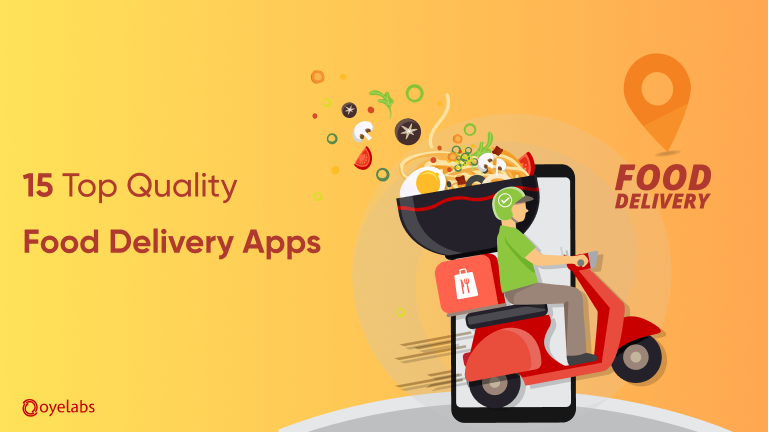5 Essential Elements For Mobile Technology for Food Ordering
Wiki Article

The food delivery industry has experienced rapid expansion in recent years, driven by the increasing demand for convenient on-demand services. With platforms like Uber Eats and DoorDash revolutionizing the way people request meals, the emphasis has shifted to developing cutting-edge food delivery apps. These apps provide customers the ability to order food from their favorite restaurants and have it brought right to their location. For companies, the challenge is to utilize technology to improve delivery logistics and ensure a seamless user journey.
Building the Perfect Food Delivery App
Creating a successful food delivery app requires a thorough understanding of the market trends and business models that dominate the industry. Whether building a full-stack delivery solution or focusing on niche areas like virtual restaurants or cloud kitchens, the app’s features needs to serve to both users and restaurants. Key features such as order tracking, delivery time optimization, and customer satisfaction metrics hold a vital role in ensuring user retention.
Restaurant Delivery Partnerships: A Winning Strategy
Eateries are progressively forming collaborations with delivery platforms to increase their customer reach. These agreements help restaurants provide to a wider audience while reducing the challenges of managing their own delivery services. The success of such collaborations depends on technology integration, which boosts the app usability and enhances the customer experience. Through these collaborations, restaurants can increase brand loyalty and make sure that they stay relevant in a crowded market.
How KPIs Drive Food Delivery Profitability
For any business, understanding its performance metrics is essential to ensuring profitability. In the food delivery industry, KPIs such as time efficiency, precision in orders, and user happiness are essential. Tracking and improving these KPIs allows delivery services to provide a superior customer experience. Additionally, keeping an focus on profitability helps companies streamline operations, reduce delivery fees, and increase overall efficiency.
Customer Satisfaction and User Retention Strategies
A significant element in the growth of food delivery platforms is their capacity to keep customers through excellent customer service. Providing quick service and resolving user feedback swiftly can Postmates assist companies enhance their service offerings. Moreover, introducing loyalty programs and offering incentives like free delivery can increase user retention. User happiness can be additionally bolstered by ensuring food quality control and offering a smooth processing system.
The Role of Technology in Food Delivery
Innovative solutions is at the core of modern food delivery services, helping companies refine their operations and provide a smooth customer experience. From app creation to real-time delivery tracking systems, technology plays a significant role in the success of delivery platforms. The application of data analytics to understand customer demographics and preferences enables delivery services to provide personalized experiences, further enhancing user engagement.
Competitive Analysis in the Food Delivery Market
The food delivery market is highly competitive, with many players vying for market share. Conducting a market evaluation allows companies to gauge their position in the market and spot opportunities for growth. Delivery platforms must differentiate themselves by offering distinctive features such as ghost kitchen services, quick service, or specialized cuisine options. Analyzing sector dominance and customer actions enables companies to tailor their services and stay ahead of the competition.
The Impact of the Pandemic on Food Delivery Services
The COVID-19 pandemic has had a substantial impact on the food delivery industry, accelerating its expansion as more people turned to on-demand apps due to social distancing measures. The change has emphasized the necessity of digital transformation in the food industry, with restaurants rapidly adopting online food ordering and delivery apps. As the world adapts to new routines, food delivery businesses must persist in innovating to meet changing consumer demands and secure market expansion.
Investing in Food Delivery Startups
The delivery sector presents plenty of entrepreneurial chances, with investors eager Food Delivery Technology Trends to backing companies that provide unique solutions. From creating UberEats clones to building niche delivery apps, entrepreneurs have a variety of paths to pursue. Investors seek out strong business models and the ability to grow, particularly in aspects like system efficiency, user experience (UX), and technological advancement. By focusing on these areas, startups can secure substantial investments and establish themselves in the industry.
Enhancing Food Delivery Service Profitability and Expansion
Expanding a food delivery service demands a strong base built on customer acquisition, cost models, and unique offerings. As local delivery services expand, businesses should concentrate on establishing a reliable logistical system and maintaining food safety. In addition, expanding the menu offerings, forming new restaurant partnerships, and adopting advanced tech solutions in food delivery will propel further growth. By continually optimizing delivery times and ensuring high customer satisfaction, companies can maintain a market lead and boost revenue generation.
These topics provide a complete understanding of the service landscape, with a focus on key areas that drive the industry forward. Whether you’re a new company or an established company, concentrating on these areas will assist you succeed in the competitive world of food delivery.
Report this wiki page